THE GA HOMOWO FESTIVAL
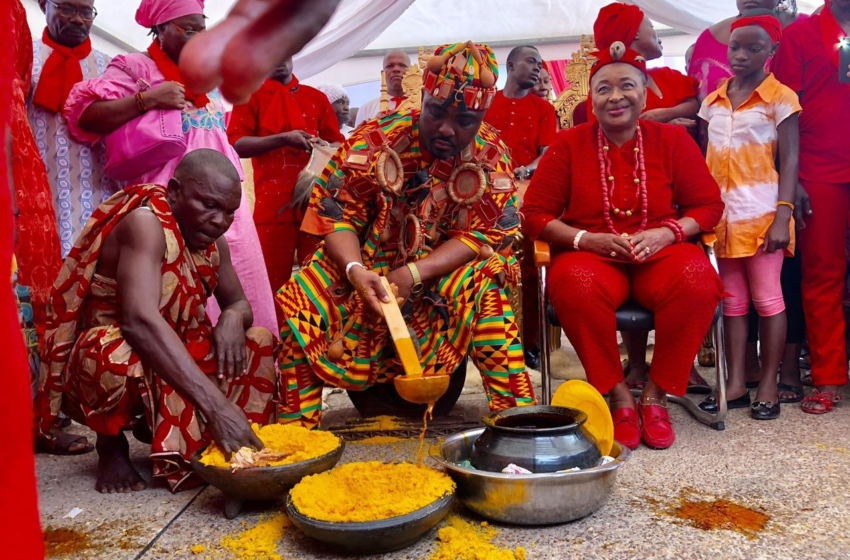
Homowo Festival Part 1
This harvest festival is celebrated by the Ga people from the Greater Accra Region of Ghana.
It begins with the sowing of millet by the traditional priests in May. After this, thirty-day ban on drumming is imposed on the land by the priests.
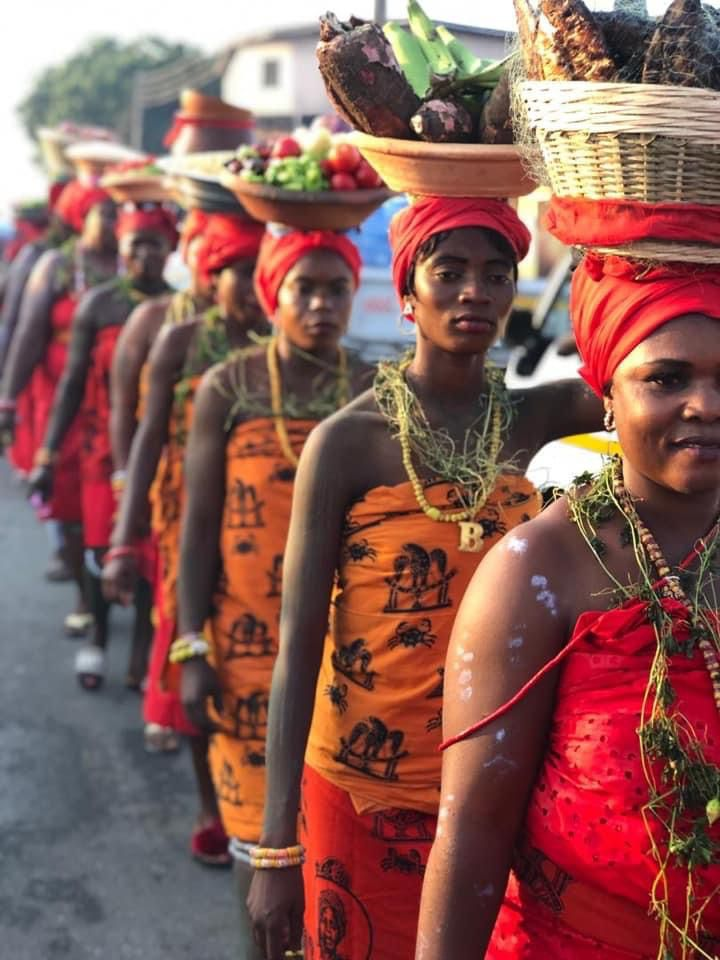
The festival is highlighted at varying times by different quarters of the Ga tribe. The Ga-mashie group of the tribe will celebrate theirs’ a little earlier than the La group.
Homowo recounts the migration of the Gas and reveals their agricultural success in their new settlement. According to Ga oral tradition, a severe famine broke out among the people during their migration to present day Accra. They were inspired by the famine to embark on massive food production exercises which eventually yielded them bumper harvest.
Their hunger ended and with great joy they “hooted at hunger” this is the meaning of the word HOMOWO.
Quartey-Papafio, A.B. ” The Ga Homowo Festival”, Journal of the African Society, Vol. 19, 1919
THE GA HOMOWO FESTIVAL
It is not intended here to trace the origin of the Ga Homowo or Harvest Custom of the Accra peoples. This takes place yearly according to the Native Calendar as given out by the Priest of the Fetish Dantu of the Damte Dsanwe people of the Asere Quarter. Asere is a sub-division of the Ga Division of the Accra District of the Eastern province of the Gold Coast Colony, nor to discuss why Harvest Custom has been held for so many centuries past and still continues.
The Ga language is spoken among a very limited population of the Gold Coast. Neither this population nor the territory it occupies is of much consequence in comparison with those of the neighbouring nations. However what the Gas lack in numbers and extent of territory, they have made up in valour and sound common sense-so much so that they have been frequently attacked. The Gas have never been conquered and made slaves of. The soil of the land has always been, and is, the property of the Ga people.
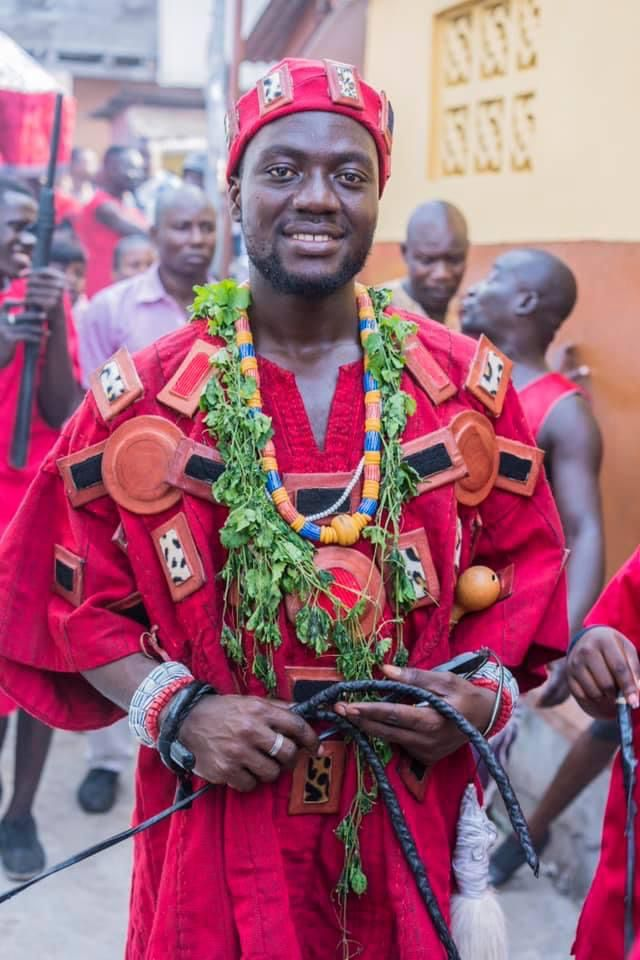
What is sought to be done here is simply to give, as far as possible, the days and dates which make up the native year with some of the events which take place on each day through out the native year, according to the Native Calendar, as given to all the Gas by the Priest of the Damte Fetish.
This Damte Dsanwe place and the Dantu Fetish with its Priest has already been referred to, and described, in one of my articles entitled “The Native Tribunals of the Akras”. This much can be said here, that the Damte Dsanwe people are, or are supposed to be, of Akan origin, and are some of the real Ga people who first came to this part of the Coast with their Mantse and Priest and regular suite, in accordance with the Native Court or State.
As with other tribes and peoples of the Ga nation, the subsequent wars and strife greatly reduced them in numbers and power; their Mantse is no longer with them and the real Stool of that people is not seen, neither has its whereabouts been known for centuries past. It is supposed to have been taken by their Mantse or Chief from Damte Dsanwe to Adutsoshishi in the Gbese Quarter of Accra; but what has become of the Stool, the State sword and other paraphernalia no one can say, or those who know are not willing to speak.
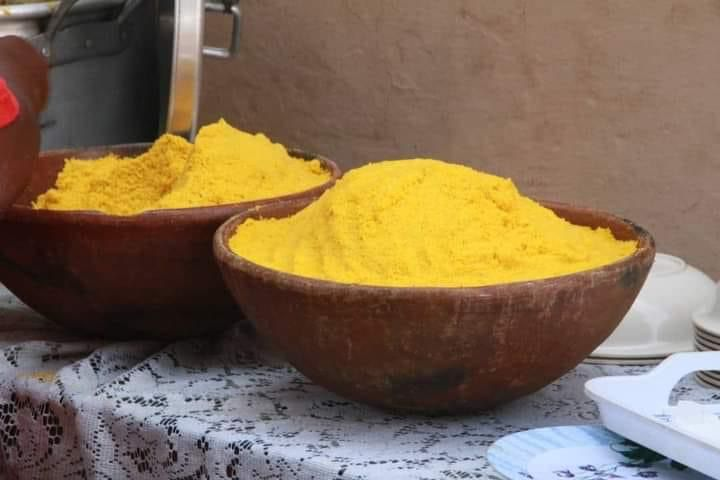
Their priest now is the head of the Damte Dsanwe people, and they and the Kpakpatsewe people now recognise and serve one Mantse, the Akwashong Mantse.
Why is it that in the same town, Damte Dsanwe people first celebrate the Homowo Harvest Festival, and then join the rest of the Akras in celebrating a similar festival a fortnight later?
The reason given for this by tradition is that some time in the history of the Ga people the Paramount Chief, or Ga Mantse; left Accra for the towns in the east of the Ga territory, and when the time for the Homowo Harvest Festival came on during his absence, the Gas who were left behind empowered the Priest of the Fetish Dantu to perform the Custom and offer the sacrifices usually done by the Ga Mantse, which he did, with the assistance of the. Akwashong Mantse; and a fortnight afterwards the Ga Mantse returned to Accra, and, although informed of what had taken place, he insisted upon holding another Homowo Harvest Festival, in which he asked all the Ga people to join, which they did; hence the second celebration also became a fixture in the annals of the Ga people, though in reality a sort of commemoration of the return of the Ga Mantse to Accra.
It will therefore be seen that although there appear to be two celebrations of the Ga Homowo in one year, yet the real Ga Homowo or Harvest Festival is the first one – the one known as the Damte Dsanwe Homowo – because that is the one celebrated at the end of the native year and properly according to native law and custom.
Why and how it came about that the Damte Priest alone works out the Calendar for all the Ga people cannot be exactly made out from the traditions handed down to date, but it is true that even today all the Akras at Accra join the Damte Dsanwe people and Kpakpatsewe people in celebrating the Damte Dsanwe Homowo by preparing privately the special meal on that Saturday and enjoying it, and then join. The Damte Dsanwe and Kpakpatsewe people in the public celebrations, which take place in the afternoon of that day.
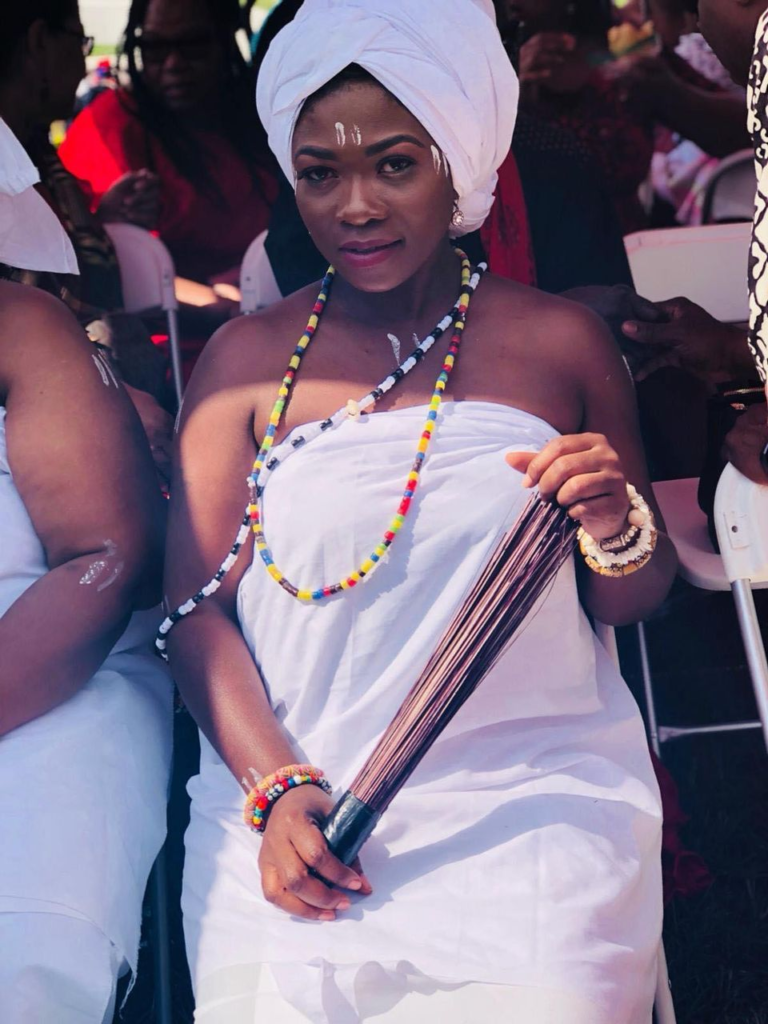
It would appear to some readers strange that, although the Asere Quarter of the town of Accra is the oldest and practically the mother of the rest of the Quarters and other towns, not only at Accra, but down to the other towns on the East.
However not many of the Principal Fetishes are located there, and that most of them are in Gbese Quarter; and also, that although in the days of yore a Fetish was supposed to be an important thing to be possessed by every chief, there is no real or public Fetish located at the Abola Quarters where the Paramount Chief, or Ga Mantse, now has his residence, neither is any such Fetish at the Alata Quarter.
The reason for this given by tradition is that, when Prince Okaija, who afterwards became the first known Mantse of Gbese and must have learnt or known something about the Christian religion in Portugal, returned to Accra, and when he found the state of things in the place and also saw so many fetishes collected together at Asere with their Priests, he kept his eyes on them.
When he came to establish his Quarter, now known as the Gbese Quarter, Prince Okaija took with him those of the fetishes which he discovered were substantial; that is, those that derive their source or sources of devotion from some real things in existence, such as land, water, stream, sea or mountain, as the source of personification the medium of their intercourse with the. Divine being among particular devotees of such fetishes, and took them with him to the Gbese Quarter, i.e.
Fetish Source of Devotion
Sakumo The Sakumo River
Nai The Sea
Korle The Korle Lagoon
Oku The Densu River
But all the rest of the fetishes which had no real or particular source of devotion he left at Asere, and they remained there till the Sempes and the Akugmai Aji left the Asere Quarter for Ngleshi, now called James Town, and they took with them the Oyieni Fetish and such like other fetishes.
Moreover the fact of no fetish being found at Abola Quarter is explained in the fact that the Abola people are not Gas, and when the Ga Mantse went and resided there that did not make them Gas because the Ga Mantse was not, and all his successors have never been Gas, neither have they really been regarded by the people as such.
It will also be seen that all the stools in Accra had fetishes attached to them originally, but till the Sakumo Fetish was discovered and the Ga Stool was removed from Asere to Abola, it had no fetish attached; the Ga Stools, which have stool fetishes attached, are given hereunder with their fetishes.
Stools Fetish
Damte Dsanwe Stool Dantu Fetish
Akwashong Stool Gua Fetish and Abudu Fetish
Asere Stool ( Nikolai) Kalan, Kotope, Oyeadu, Karinana and other fetishes
Sempe Stool Osekan, Oyeini, Abosu Abla, Obutu Oyeini and Karinana fetishes
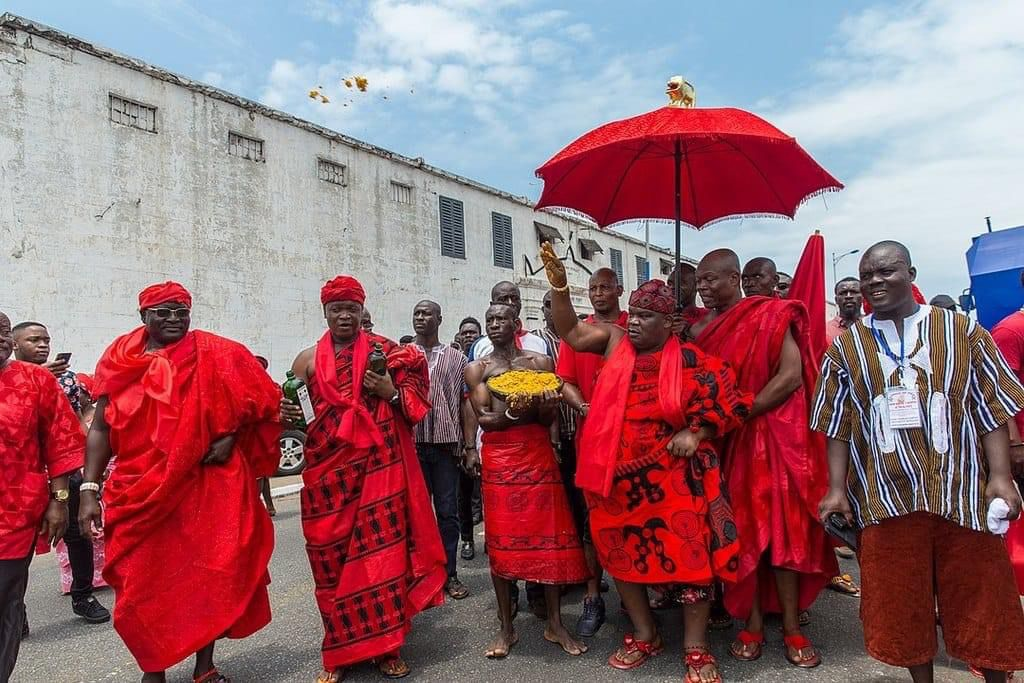
All the fetishes attached to the Sempe Stool are supposed to be. part of the Nai Fetish, and they really do all their things with the Nai Fetish. The Akugmai Aji Stool observes its Yam Custom the same day with the Gbese Stool.
All these fetishes, being Ga in origin, celebrate the corn harvest, and do so a week before their stools celebrate their Yam Custom; all the remaining stools of the Akras are either Twi, in origin or follow or continue or adopt the Twi custom and have Fetishes, but they celebrate Adai and not corn festival before their stools celebrate their Yam Customs either in the same week or week after.
The Twi Stools in Accra Town are:
Stool. Fetish
Gbese Stool Korle Fetish
Otublohum Stool Afeaye Fetish
Alata Stool Okai Jata Afeaye Fetish, Charway Fetish. The Banafo fetish they worship is a fetish which some Mowele people who came to Accra for fishing purposes brought with them for self-protection. The Kwei Kuma Fetish is not attached to the Alata Stool; it is a family fetish.
Abola Stool The Abola Stool has no known Fetish.
Akagmai Aji Stool Akagmai Aji Stool has no known Fetish.
The Korle Fetish is, said to be the fetish of the Gbese Stool by grace only because it is a Ga Fetish and celebrates the corn feast instead of the Adai or Yam Custom. However just as the Sakumo was made or considered to be a fetish for the Ga Stool be-cause the Ga Mantse performs the duties of the Priest in the absence of one either through death or journey, the Korle and, Sakumo Fetishes both observe the corn feast.
The Oyeadu Fetish is Asere Fetish, but it is not recognised as the fetish of the Asere Stool, and it is part of the tradition of Asere that the Qyeadu either comes out of or is a part of the Kalan Fetish, and that what the Oyeadu Fetish spoils, the Kalan repairs.
It is admitted that the Oyeadu Fetish does wicked things; therefore if anyone die in childbirth the Qyeadu Fetish Priest and his people take all the goods of the deceased, and no one goes to the bush towns or farms or the water places for water on the Sunday following the day of which that person so died.
Until that person’s place or house is purified on account of what the satellites get as their share from the booty in the dead person’s property; they afterwards started to commit acts not short of murder, till they got into conflict with the police and their Priest imprisoned with hard labour and the fetish removed to Ussher Town, Accra.
The Fetish Karinana is the same as the Kalan, and the head of them all; any important meeting by the fetishes with their Priest are held at its place.
The Obrafo is not one of the fetishes which the Ga people came with; it is located at Asere Quarter. They took it from the Akwamu refugees as hostages for their good faith and good behaviour whilst they lived among them.
As the Akwamu refugees, now the Otoo Street or Otublohum people, used it as a medicine fetish for war, the Asere took it from them and handed it to their fetish Qtu, which used to celebrate the yearly Custom which is now given the name of the Obrafo, known as the Obrafo or Yam Custom.
The Kotope Fetish, now a fetish of the Aseres, was formerly like the Obrafo War Fetish a Medicine Fetish for War; it came from the Salagah wilds, and it was this fetish that the Akwashong Mantse Kwatei Kojo took with him when he went to Crepee War, known as Neire, some time in 1828 or later.
The fetishes mentioned above are what one would call Town Fetishes or Seem-Town Fetishes, inasmuch as the celebration of their Corn Custom or Yam Custom has relationship to Yam Custom of the Stools, and precedes the Yarn Custom of a stool to which they are attached, and their customs are some of the yearly fixtures in the annals of the Ga people.
There are other fetishes and stools in the town of Accra which although they are not or cannot be considered Town Fetishes and Stools, yet they celebrate their yearly feast just as the other Stools and Fetishes, e.g.
Stool Fetish
The Ankrah Family Stool in the Otublohum Quarter of Accra The Dade Ban Fetish
The Damte Dsanwe Stool in Asere Quarter of Accra The Dantu Fetish
The Jas. Asafoatse Stool of the Amatsewe People in the Asere Quarter of Accra The Afieye Fetish
The Wamback (otherwise called Welbeck Family Stool, which is the Jase Asafoatse Stool in the Gbese Quarter of Accra The Odonfeh Fetish
The Sempe Mensah Stool in the Sempe Quarter of Accra
The Hansen Afeina Stool of the Sempe Quarter of Accra The Dade Fetish
Besides these two different ranks of Stools and Fetishes, there are other Stools and Fetishes, which are either Twi, Fante, Dangme or Awuna, celebrating their Yam Custom yearly.
Not withstanding the pomp and expense attaching to the Homowo Harvest Festival, the people also join in the celebration of Christian feasts, spending their money equally, if not more, in the Christmas and New Year season festivities. Some are even inclined to have a hand in the celebration of the Muhammedan (Muslim) Feast in their principal feast days, and these show clearly that although the civilised and uncivilised native of the Gold Coast, in appearance and way, seems to be conservative in many things, yet in matters of religion he or she is a cosmopolitan in the extreme, regarding one faith as good as another.
The Obutus, who are Gas and form part of the Ga nation, being really under the Ga Stool, spend their Homowo or Harvest Festival, which they call ohume, a week after the general Ga celebration – that is, on the fourth Saturday after the Damte Dsanwe Homowo Custom has been celebrated.
It is believed by some that the Obutu people are not Gas, because they use in their ordinary conversation and transaction a language called by them Afutu, which appears to be different from the language usually employed by their brothers, the Gas on the east side of the Sakumo River. There really is no difference between the Obutus and the Gas; to say the very least, nearly all the Obutus understand the language used by their brothers on this side of the Sakumo River.
The Afutu language is nothing more or less than the language used by the fetishes on both sides of the Sakumo River, and which the Fetish Priest mostly employs when addressing the fetishes on both sides of the Sakumo River.

The Qsu or Christiansborg people celebrate their Homowo or Harvest Festival on the second Tuesday after the Gas generally have celebrated theirs, and, on the fourth Tuesday after starting of the days of the year on the first Monday of the native year by the Dantu Priest.
The La or Labadi people and a few of the towns down to Addah celebrate their Homowo or festival season on the fourth week after the Ga people have celebrated their own-that is, on the third Saturday after the general Accra celebration.
The Nungua people celebrate their Homowo season on the fifth Saturday after that of the Accras. The Tema people celebrate theirs a week after the’ Damte Dsanwe Homowo.
There are, roughly speaking, fifty-one weeks in the whole of the Ga native year.
The native week is not all made up of eight days, as is generally alleged; only the week starting from the first Monday, when the native year starts, to the following Monday, is made up of eight days; but all the following weeks are made up of seven days.
It will be seen from the days given in the Native Calendar later on that whilst there are 365 days generally in the English Calendar making 52 weeks, there are only 357 days in the Native Calendar, making a total of 51 weeks. Further, whilst there are 12 months in the English year, the 357 days in the Native year give 12 moons of 28 days and three weeks.




